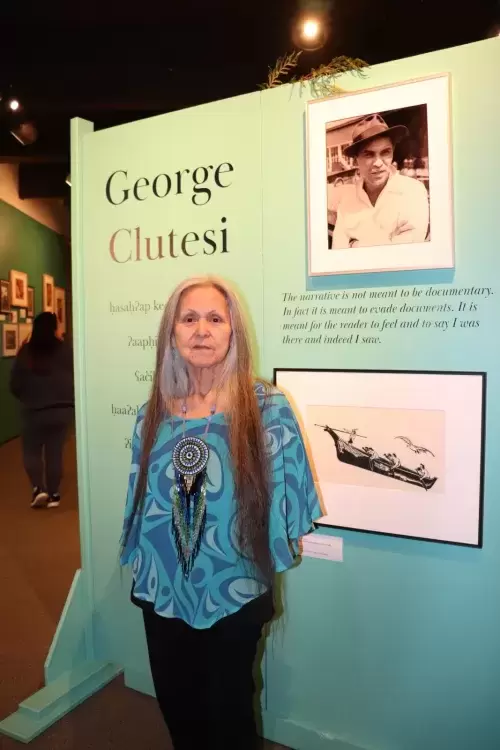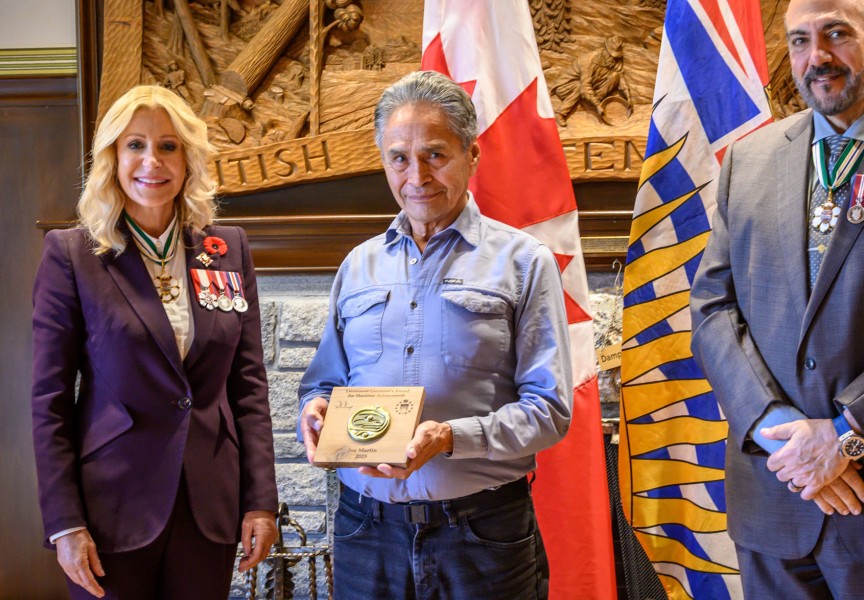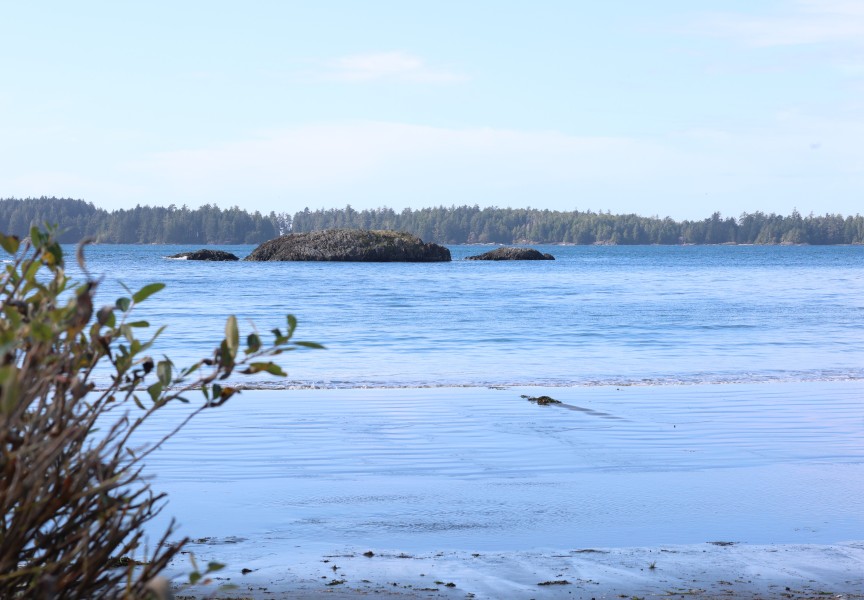“He’s given so much to so many, recognition of him is long overdue,” said Shelley Harding, the Alberni Valley Museum’s coordinator and education curator, of the late cultural leader, George Clutesi.
George Clutesi, born 1905, was an artist, educator, scholar, author and actor. He was a strong proponent of teaching Nuu-chah-nulth culture to anyone that would listen, so that it may be passed on to future generations.
The AV Museum exhibit called George Clutesi: ḥašaḥʔap / ʔaapḥii / ʕac̓ik / ḥaaʔaksuqƛ /ʔiiḥmisʔap is the latest to explore the Tseshaht man’s legacy through his work, art and activism.
“George Clutesi (1905 – 1988) was a c̓išaaʔatḥ (Tseshaht) artist scholar/educator, activist and actor,” reads a statement from the AV Museum. “He was a firm believer in his traditional ways and lived his life with a core belief of passing on his knowledge to the next generation.”
The Tseshaht words in the title of the exhibit are meant to describe the man. ḥašaḥʔap means to keep, to be protective. ʔaapḥii means generous. ʕac̓ik means talented. ḥaaʔaksuqƛ means strong-willed and ʔiiḥmisʔap means treasure.
According to Harding, the exhibit was about three years in the making.
“It started with the residential school survivors’ art exhibit,” said Harding.
That exhibit showcased the work of Alberni Indian Residential School children from the time they were in the institution. The works were discovered decades later in a portfolio of the art teacher and were donated back to the artists.
“He was important to the survivors,” said Harding.
She went on to say that, to the AIRS survivors, Clutesi was approachable and willing to share his language and belief system.
“He embraced everyone he met, and many called him ‘Uncle George’,” Harding shared.
Clutesi authored the children’s book Son of Raven, Son of Deer. Harding recalls reading the book in the fifth grade.
“It’s been translated into several different languages and is read around the world,” said Harding.
He appeared in several films, but is most fondly remembered in the Nuu-chah-nulth communities for his role as elder George P. Hudson in the 1973 movie I Heard the Owl Call my Name, which was filmed in Ahousaht.
The exhibit, which opened March 18, features some original art made by Clutesi from the 1940s to the 1970s. There are also some replicas of his art in the exhibit. These framed pieces can be viewed while Nuu-chah-nulth drumming music plays softly in the background.
Also included in the exhibit are contemporary works from Nuu-chah-nulth artists that wanted to pay tribute to Clutesi, thanking him for his contributions to preserving culture. Contributing artists include Tla-o-qui-aht brothers Hjalmer Wenstob and Timmy Masso, Marika Echachis Swan of Tla-o-qui-aht, Dr. Dawn Smith, Ehattesaht, Dr. Tommy Happynook of Huu-ay-aht and Petrina Dezall of Mowachaht/Muchalaht and Hesquiaht.
There is a documentary film that can be viewed in the gallery. Made by Alberni Indian Residential School survivors, the film features seven former students who share their childhood memories of Clutesi and his advocacy work.
The Clutesi family has selected Tseshaht historian Ann Robinson to share her knowledge of their father and grandfather during the exhibit.
The exhibit was made possible through contributions from the RBC Museum, the University of Victoria, the Bateman Foundation, Canadian Heritage, Heritage BC, Smyth Chair in Arts and Engagement at the University of Victoria and the Alberni Valley Museum.
There will be an opening ceremony by invitation only on April 22.
The exhibit will be shown at the AV Museum until September 2, then it will be off to other venues like the Bill Reid Gallery in Vancouver.







